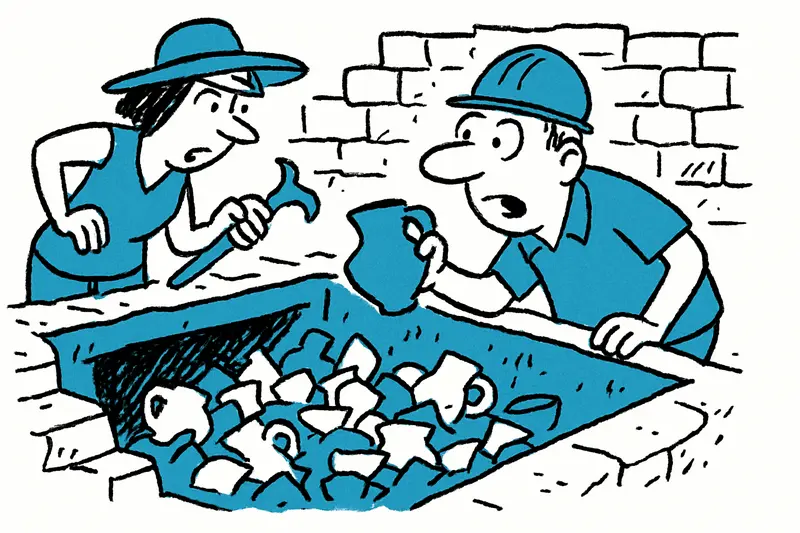During restoration work at Alaró Castle, archaeologists uncovered multiple overlapping structures, a cistern deeper than expected, and nearly a thousand ceramic fragments. Initial analyses suggest a long history of settlement.
Archaeological Surprises Above the Village
Monday morning, the sun had just started to warm the stones of the castle wall when the small excavation team made a discovery that even the most experienced volunteers paused for a moment. What began as conservation restoration work within a 138,000-euro plan has evolved into a glimpse into multiple layers of the island's history.
Several Walls, a Deeper Cistern
Within the cleaned work area, structures appeared layered on top of one another: walls leaning against each other to indicate different construction phases, and a cistern that lies significantly deeper than previously assumed. The excavation lead described the layering cautiously as 'complex' — and that says it all. The depth of the cistern is surprising because it may date much earlier than the previously known Islamic use of the site.
On site archaeologists, local helpers, and some students are at work; you can hear the clatter of trowels, the soft discussions, and occasionally a distant honk from the road into the valley. An old cart still stands at the edge of the site — no longer just a prop, but a nice image showing that here work is done by hand, not only digitally in the lab.
Ceramics, Chronology, and Everyday Life
Around a thousand shards have been recovered so far. They are fragments from pots, handles, some glaze remnants — nothing that smells like a sensation, but exactly this is what gives it value: ceramics are everyday life. And everyday life tells who lived, cooked, and dug here. First samples are currently being analyzed in the lab. Early indications suggest parts of the finds are older than the previously assumed Islamic settlement.
The municipality has allocated 138,000 euros for the work; the funding covers excavation, documentation, and initial stabilization measures. The goal is pragmatic: stabilize, document, then present decisively. By the end of the year, the first results are planned for public presentation — with finds, drawings, and hopefully many answers.
What Does This Mean for Alaró?
For the people here, the news triggered a strange mix of pride and responsibility. Some residents stop by nearly daily, bring water, or swap anecdotes about how the castle used to be. Others worry about noise or parking — typical concerns when small excavations take place.
Practically: work continues, the team expects occasional delays due to weather or new findings. Those who look closely will notice: this is not archaeology for textbooks alone. These are layers of human life, right above the street where children go to school and seniors drink their morning coffee.
More information and the official presentation of the results are expected toward the end of the year. Until then, the Castle of Alaró remains a small, living archive of the island's history.
Similar News

Die Zeit auf Mallorca: Warum die Uhren hier anders ticken
Auf Mallorca läuft die Uhr offiziell anders als die Sonne — ein Erbe aus den 1940er-Jahren, das bis heute unseren Alltag...

Orange Weather Warning for Mallorca: Heavy Rain and Thunderstorms Set the Week
Aemet warns: Monday and Tuesday on Mallorca are under orange alert. Heavy rain, floods, and traffic disruptions are poss...

Life-threatening swimming accident in Ibiza: 73-year-old revived on the beach
During severe storms, a 73-year-old visitor swam despite a red flag. Lifeguards rescued her, and she is now seriously in...

Mummified Body Found in Abandoned House Near Santa Margalida
Between Can Picafort and Son Serra de Marina, teenagers discovered a mummified corpse in an abandoned house. Identity an...

Large Rockfall Blocks Ma-2141 Road Near Sa Calobra
After heavy rainfall, several rock blocks toppled onto the winding Ma-2141 toward Sa Calobra over the weekend. The road ...
